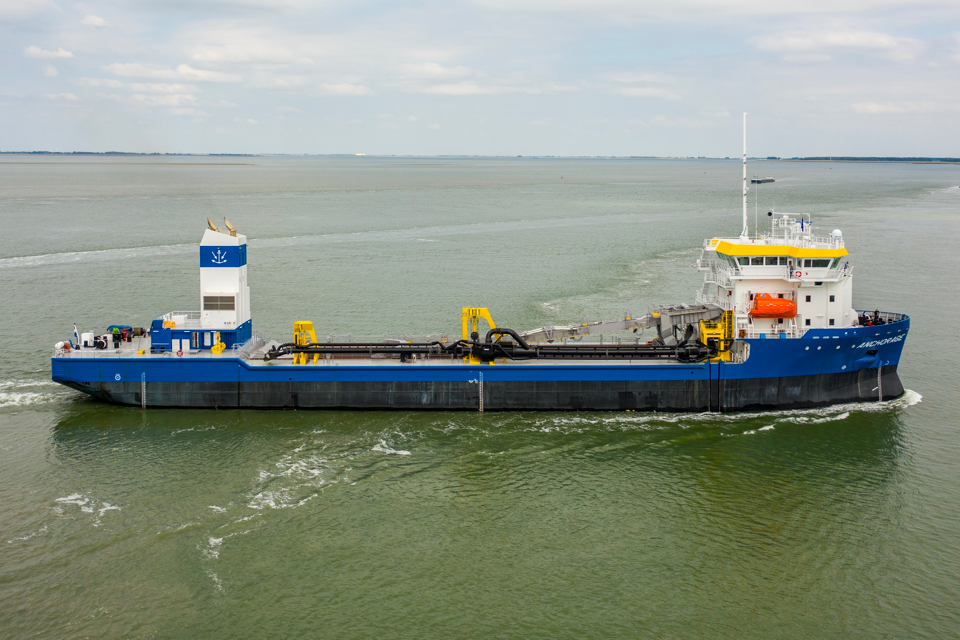Alewijnse was responsible for the comprehensive electrical installation of De Hoop’s new build trailing hopper suction dredger (TSHD) Anchorage. Part of the scope was developing a new system to control and monitor the dredging process.
The 106-metre vessel is one of just a few diesel-electric TSHDs that specialises in sand and gravel extraction at sea and the dry landing of the cargo. The ship, ordered by De Hoop Terneuzen BV, is one of two advanced dredger projects that were taken over by Thecla Bodewes Shipyards following the insolvency last year of Barkmeijer Stroobos BV.
Alewijnse was subsequently appointed by the new shipyard management in the summer of 2019 to take responsibility for the completion of the works. This involved the design, building, installation and commissioning of the switchboards, consoles and the dedicated alarm, monitoring and control systems. It also included the design, engineering, supply and commissioning of the dredging automation system, including visualisation, monitoring and process control.
Just seven or eight crew
For the control and monitoring of the dredging process, Barkmeijer has collaborated with Alewijnse to develop an intelligent and integrated bus-driven system. In addition to delivering high dredging performance, its capabilities mean that a crew of just seven or eight is all that is required to manage, load and unload the vessel. Elsewhere on board, the diesel-electric power plants significantly reduce energy consumption and emissions.
Following the launch of the Anchorage earlier in the year, Alewijnse personnel completed the testing and commissioning of the automation systems for the dredging equipment, loading gutter and sieve in the last few weeks. The ship was delivered to De Hoop in June.
‘We are very happy that Thecla Bodewes Shipyards gave us the opportunity to complete this dredger,’ says Martin Terpstra, Operational Manager at Alewijnse Marine. ‘The biggest challenge was to restart the project after the bankruptcy of Barkmeijer Stroobos. We had to begin over again with an unfinished engineering package and incomplete information, and also work both with the new team at the yard and a new owner. Despite this situation, the project is now complete thanks to excellent all-round cooperation and the total commitment of all the parties involved.’








